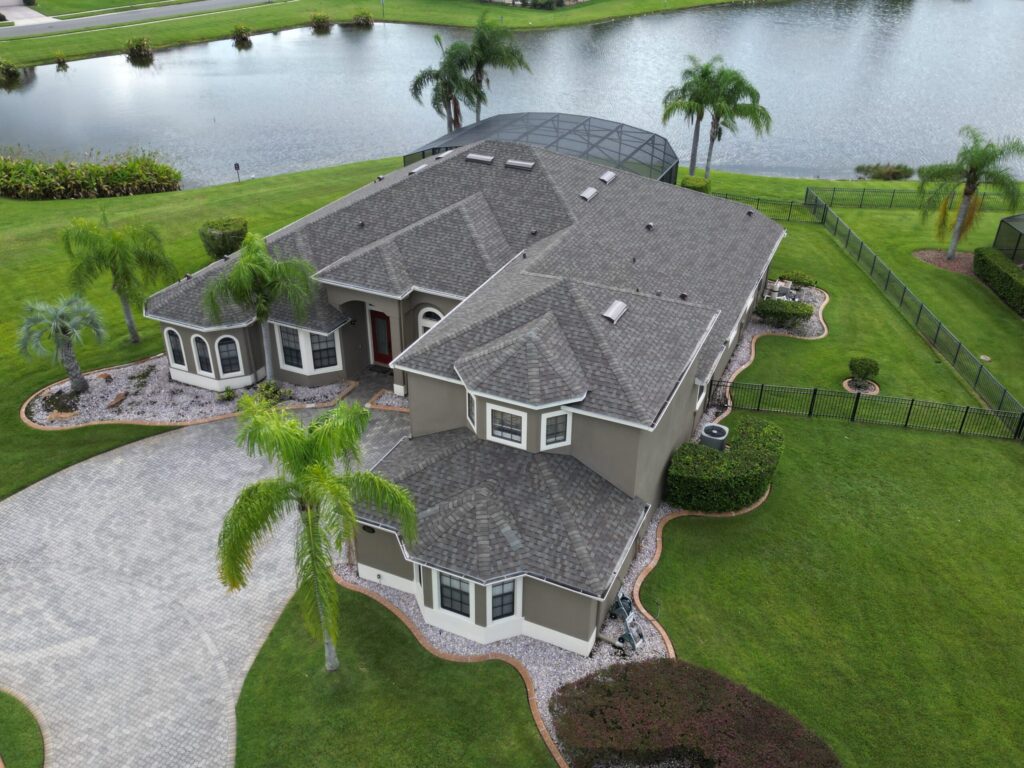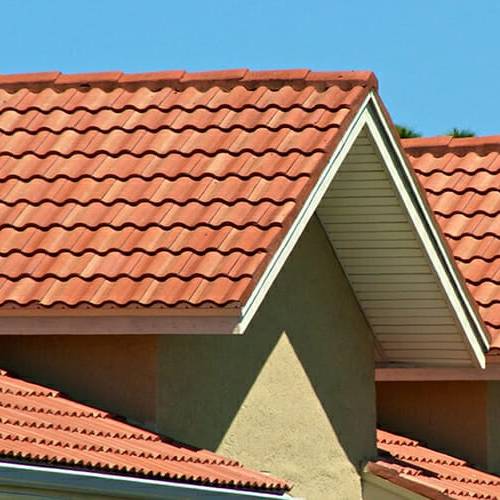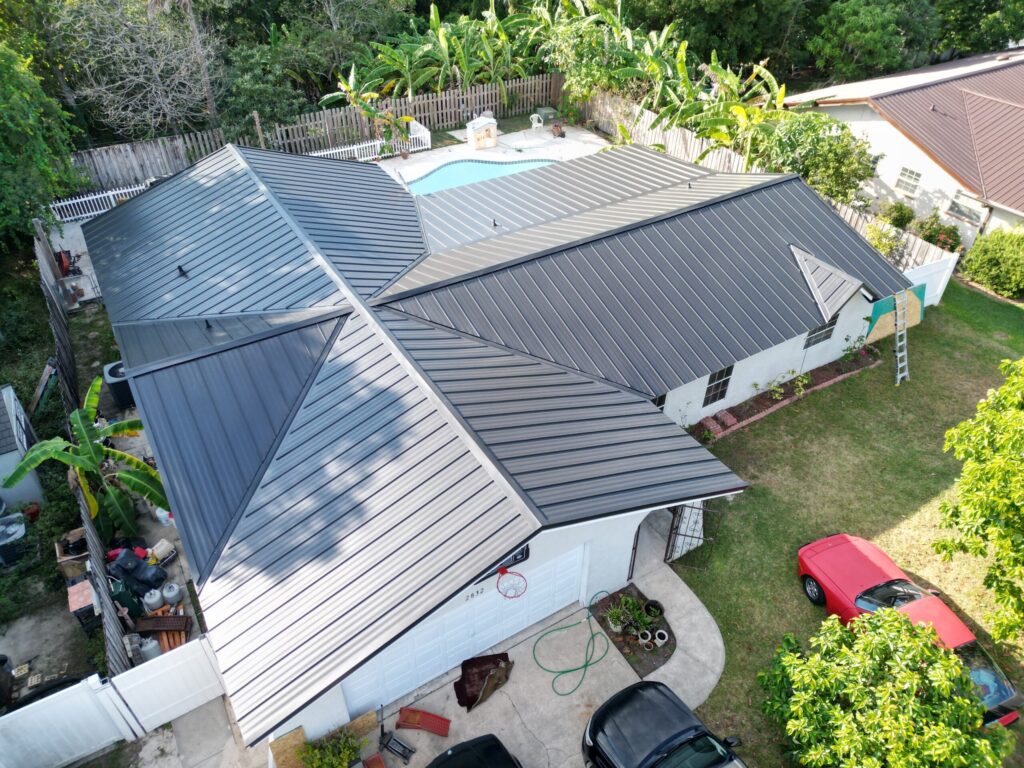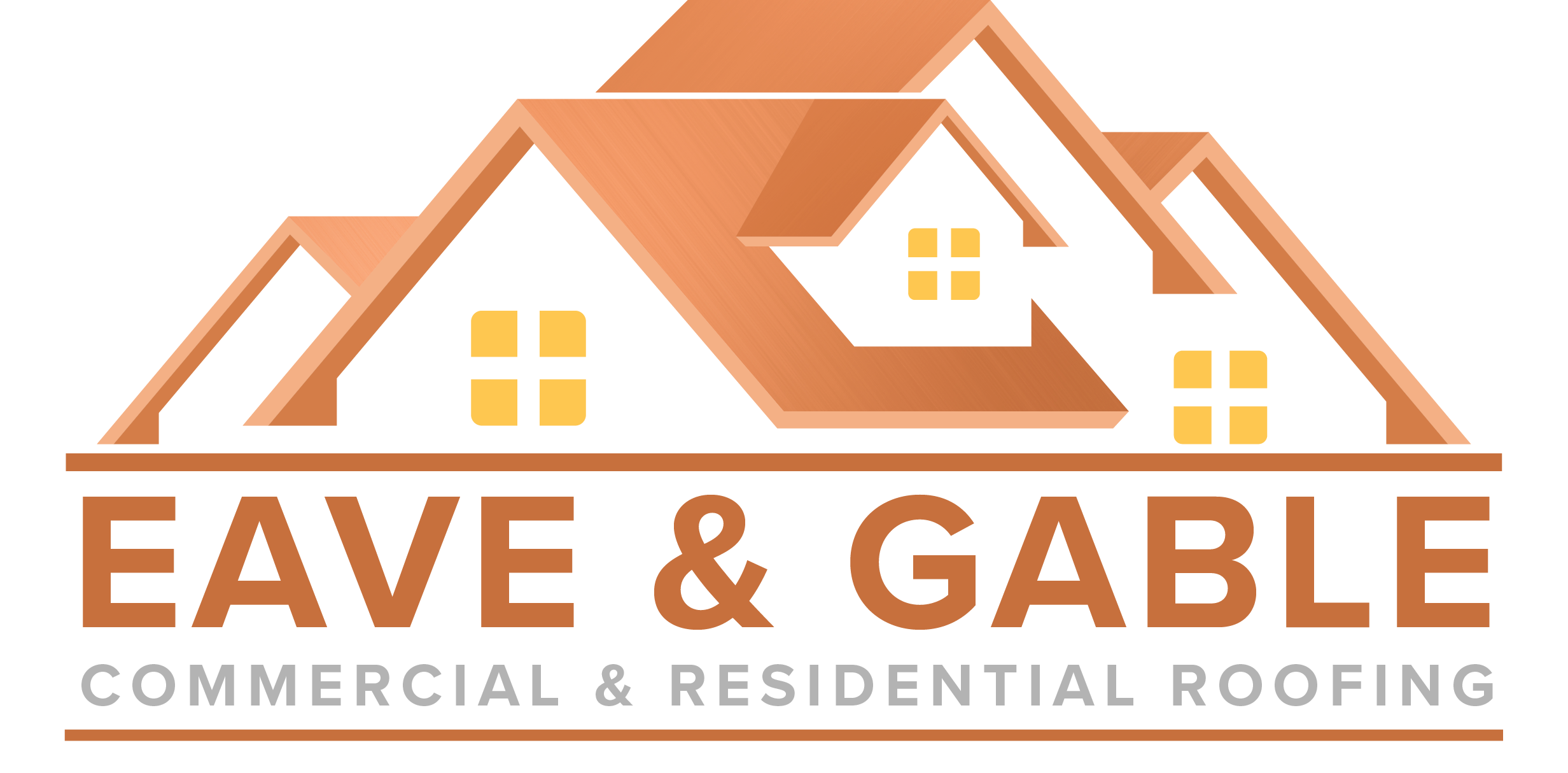Florida’s climate can be as brutal as it is beautiful. With its intense sun, heavy rain, high humidity, and seasonal hurricanes, the Sunshine State places extraordinary demands on your roof. That’s why choosing the right roofing material is more than a matter of style or cost—it’s a critical decision that can affect your home’s durability, energy efficiency, and long-term maintenance needs.
At Eave & Gable Roofing, we’ve helped homeowners and businesses across Central Florida make smart roofing decisions since 2021. Whether you’re considering a full roof replacement, planning repairs, or simply exploring your options, this guide will help you understand the pros and cons of asphalt shingles, tile, and metal roofing in Florida’s unique environment.
Asphalt Shingles: Affordable and Familiar
Asphalt shingles remain the most common roofing material in Florida—and across the U.S.—for good reason. They’re cost-effective, relatively easy to install and repair, and available in a wide range of colors and styles to match nearly any home design.

Pros:
- Lower upfront cost compared to tile or metal
- Quick installation and repair
- Available almost everywhere
- Improved wind resistance with modern architectural shingle options
Cons:
- Shorter lifespan (typically 15–25 years)
- More susceptible to Florida’s intense UV rays
- Vulnerable to algae growth in humid conditions
For homeowners on a budget or those with simpler roofing needs, shingles can be a great option—especially if you stay on top of maintenance. If you’re unsure whether your shingles have reached the end of their lifespan, check out our recent blog post: Top 5 Signs You Need a Roof Replacement in Central Florida.
Tile Roofing: Timeless Style with Serious Strength
Clay or concrete tile roofs are a popular choice in many parts of Florida, especially near the coast. Their distinctive appearance adds Mediterranean flair and curb appeal, but they’re not just about looks—they’re also built to last.

Pros:
- Exceptionally durable (lifespan of 40–50 years or more)
- Highly resistant to fire and wind
- Excellent thermal performance, keeping homes cooler
- Ideal for Florida’s humid and salty air
Cons:
- Higher upfront cost
- Heavier material (may require roof structure reinforcement)
- More expensive to repair
- Not suitable for all roof pitches
Tile is a smart long-term investment if your home’s structure can support the added weight. It’s especially beneficial for coastal areas that endure salty air and high humidity year-round. If you’re interested in this option but concerned about structure or cost, our team can inspect your roof and recommend whether a repair or full replacement makes sense.
Metal Roofing: Modern Looks, Maximum Resilience
Metal roofs have surged in popularity in Florida over the last decade—and for good reason. Today’s metal roofing systems are far more attractive than the corrugated tin of decades past, and they offer unmatched performance in Florida’s challenging environment.

Pros:
- Outstanding durability (40–70 years lifespan)
- Highly resistant to wind, rain, and fire
- Reflects sunlight, reducing cooling costs
- Lightweight and eco-friendly
Cons:
- Higher initial investment
- Can be noisy in heavy rain (though underlayment can minimize this)
- Requires specialized installation
Metal roofs are ideal for both residential and commercial roofing projects where longevity and weather resistance are top priorities. They’re also a smart choice for Florida homeowners looking to cut down on summer cooling costs thanks to their reflective properties.
Other Key Factors to Consider
Choosing the right roofing material isn’t just about durability—it also comes down to aesthetics, home value, insurance incentives, and even your roof’s pitch.
1. Storm Resistance
All Florida roofs should be able to withstand high winds, flying debris, and heavy rain. Tile and metal tend to perform best in these conditions, but modern architectural shingles rated for high wind zones are a close contender.
2. Energy Efficiency
Tile and metal roofs tend to provide better insulation and reflectivity, which can significantly reduce cooling costs in Florida’s long, hot summers.
3. Insurance Premiums
Some insurance companies in Florida offer discounts for impact-resistant or hurricane-rated roofing materials. If you’re replacing an aging roof, ask us how your choice of material may influence your rates.
4. Maintenance and Repairs
Shingle roofs are easier and cheaper to repair, but need more frequent maintenance. Tile and metal roofs require less attention but may cost more to fix when issues arise. For all types, we recommend regular roof inspections to catch problems early.
Not Sure What You Need? Start with an Inspection
If you’re unsure what material your roof should be made of—or whether you need a full roof replacement—the best place to start is with a professional roof inspection. At Eave & Gable Roofing, we evaluate the current condition of your roof, consider your budget and design preferences, and help you make the most cost-effective, long-term decision.
What If My Roof Is Already Damaged?
Florida weather is unpredictable, and sometimes you’re forced to make a quick decision after a storm. If you’re dealing with leaks, missing shingles, or fallen debris, our emergency roof repair services are just a call away. We’ll stabilize the damage, provide a quick repair if possible, and work with you on a long-term solution—whether that means repairing your existing system or planning a full replacement.
Final Thoughts
Your roof is your first line of defense against Florida’s challenging weather. Whether you choose the affordability of shingles, the beauty of tile, or the resilience of metal, the most important factor is working with a trusted, local roofer who understands the unique demands of the region.
At Eave & Gable Roofing, we combine deep knowledge of Florida’s roofing challenges with high-quality materials and craftsmanship. If you’re exploring options or need advice tailored to your home or business, our team is here to help—starting with a free roof inspection.
